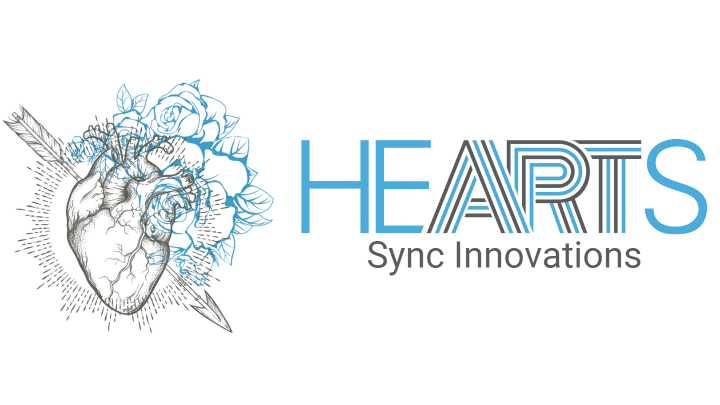The prevalent myth: Relaxation takes a lot of time – a whole wellness day, otherwise, it’s not effective. The evidence overturns this narrative. Short, strategically placed micro-rituals measurably change stress perception, cognitive flexibility, and sleep quality. Studies have shown that even a practical breathing or mindfulness practice can reduce perceived stress and improve mental adaptability – without requiring hours of sessions [Ref41136540; Ref40792649].
Stress is not an enemy, but a signal. What matters is how quickly your system switches from activation back to regeneration. Central to this is the parasympathetic nervous system tonethe ability of the "rest-and-digest" branch to calm bodily functions, measurable, among others, by heart rate variability (HRV)fluctuation between heartbeats – higher typically indicates better adaptability. Micro-rituals – short, recurring actions with clear intention – act like anchors. They concentrate attention, modulate breathing and posture, and provide the brain with a reliable “Now is the time for relief” signal. Mindfulness meditation trains cognitive flexibilitythe ability to switch between tasks and perspectives, breathwork regulates the autonomic loops through nasal, diaphragm, and slow breathing, and nature walks utilize sensory stimuli for calming. In the evenings, gentle tea rituals support the sleep transition by establishing a predictable “wind-down” window.
For high performers, the ability to focus quickly – and equally to disengage swiftly – is crucial. Mindfulness meditation reduced perceived stress load and improved cognitive flexibility in a randomized study compared to an active music control condition – a direct benefit for decision-making quality under pressure [1]. Structured breathing techniques with slow, nasal-diaphragmatic breathing enhance vagal activity, improve HRV, and lower cortisol and anxiety – a biological counterbalance to chronic activation [Ref40792649; Ref40843749]. Short walks in nature are currently being tested in healthcare contexts, including biomarkers like salivary cortisol and DHEA; the expectation is less stress, better mood, and more mental clarity [2]. In the evenings, a simple chamomile tea ritual can temporarily improve sleep quality and alleviate depressive symptoms – a soft yet effective “signal light” toward nighttime rest [3]. Conversely, “disengaging” via excessive TV watching is misleading: particularly for the inactive, more TV hours correlate with higher body fat percentage – a stress valve that costs energy and metabolic health in the long term [4].
A four-week randomized study compared mindfulness-based breathing meditation with active music therapy. The result: significantly lower subjective stress levels and better cognitive flexibility in the meditation group, with high acceptance – however, without clear effects on HRV in the short term and with adherence issues after three months. For practice, this means: low entry barrier, noticeable benefit, but rituals must be anchored in everyday life to persist [1]. Reviews on breathwork consolidate a consistent picture: Slow, nasal, diaphragm-focused breathing (about 5 seconds in, 5 out, short pause) improves vagal tone, HRV, and emotion regulation, while stress and anxiety levels decrease. Despite heterogeneous methodologies, the data suggest common neurophysiological mechanisms through autonomic regulation – a universal lever that operates independently of style [Ref40792649; Ref40843749]. Concurrently, an ongoing pragmatic implementation study is examining nature walking groups in standard care. In addition to psychological endpoints, endocrine markers such as cortisol and DHEA are being recorded – important for linking subjective relief with biological signatures and testing transferability into daily life [2].
- 10-Minute Mindfulness Window: Daily brief breathing meditation focused on the breath flow. Timer set to 10 minutes, smartphone away, comfortable sitting position. Goal: reduce perception of stress and strengthen cognitive flexibility [1].
- Fixed Breathing Session: Set a specific time (e.g., right after lunch). Practice 5-5-2: 5 seconds in, 5 seconds out, 2 seconds pause – nasal, diaphragm-based, 5–10 minutes. This strengthens vagal tone and HRV and stabilizes emotions [Ref40792649; Ref40843749].
- Clarity Walk: Plan 15–20 minutes outdoors, ideally in green spaces. Walk slowly, deliberately focusing your gaze on natural details (light, leaves, sounds). Mindful cues promote stress relief and mental freshness [2].
- Evening Tea Ritual: Drink a cup of chamomile tea 60–90 minutes before sleep, dim the lights, reduce screen time. In the short term, this can improve sleep quality and stabilize mood [3].
- Screen Break as a Rule: Do not use TV as the primary relaxation strategy. Limit binge-watching sessions and connect them to movement (e.g., 10 minutes of breathwork or a walk beforehand) to avoid the correlation with higher body fat in the inactive [4].
The next evolution of stress regulation is personalized, measurable, and micro-dosed: short, precise rituals that translate into biomarkers and performance. In the coming years, wearables and studies on nature walks and breathing protocols will clarify which combinations yield the greatest return on focus, recovery, and longevity for specific profiles – from CEOs to surgeons.
This health article was created with AI support and is intended to help people access current scientific health knowledge. It contributes to the democratization of science – however, it does not replace professional medical advice and may present individual details in a simplified or slightly inaccurate manner due to AI-generated content. HEARTPORT and its affiliates assume no liability for the accuracy, completeness, or applicability of the information provided.













